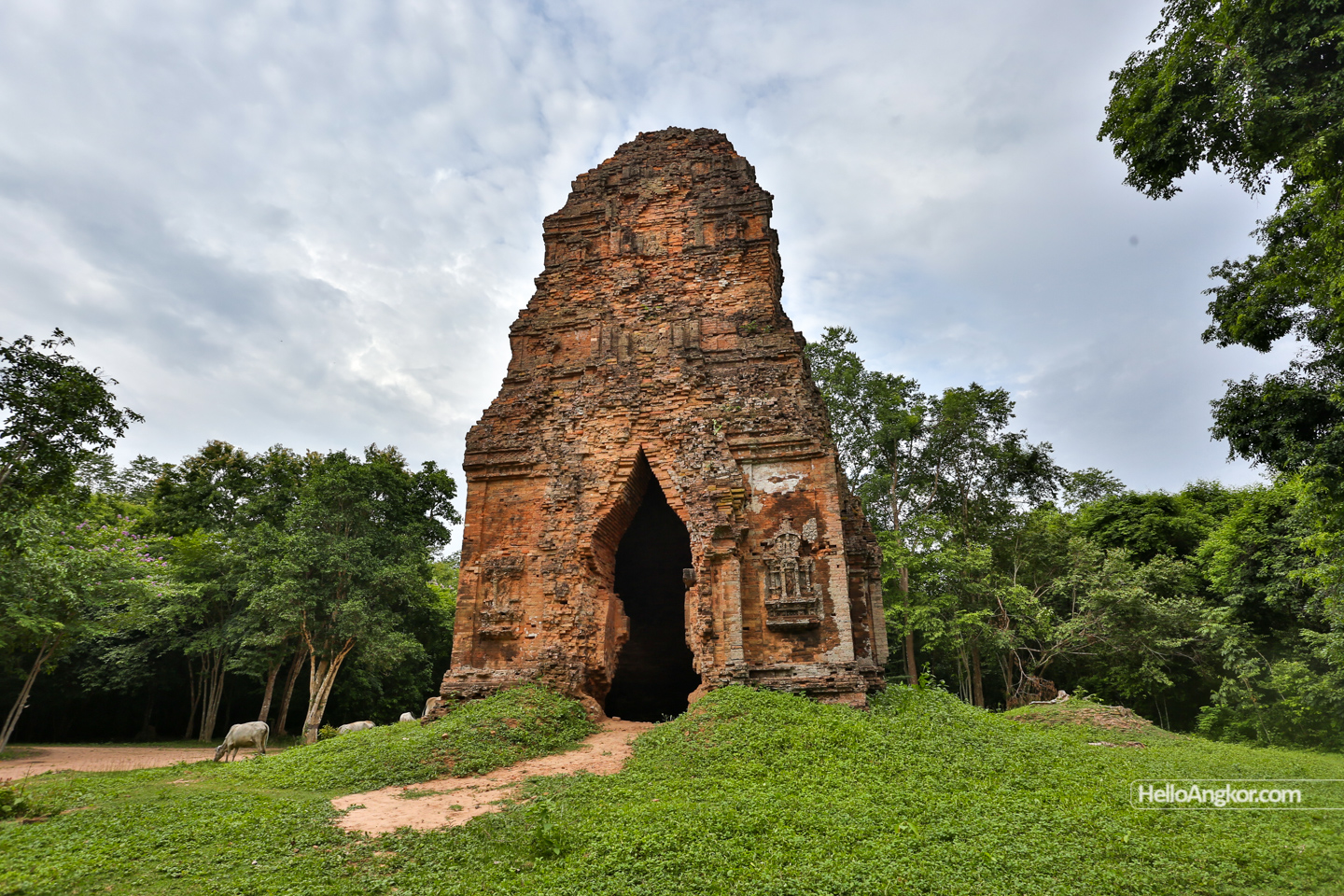Also known as Group Z of Sambor Prei Kuk, its a brick temple group featuring one tall standing brick temple surrounded by four other smaller brick temples arranged to form a quincunx. The four outer towers are all in ruin bar a partially standing octagonal temple.
The central temple is well preserved and opens to the west featuring impressive reliefs around all sides, like others of the area, depicting “flying palaces”. Whilst the style of the flying palace reliefs ties in with others, the figures in the niches strike a somewhat different pose. At this temple, the reliefs also feature some stucco rendering remaining in situ which is quite incredible.
Recently, 22/23, the site has received some restoration work in particular the octagonal temple of the group.
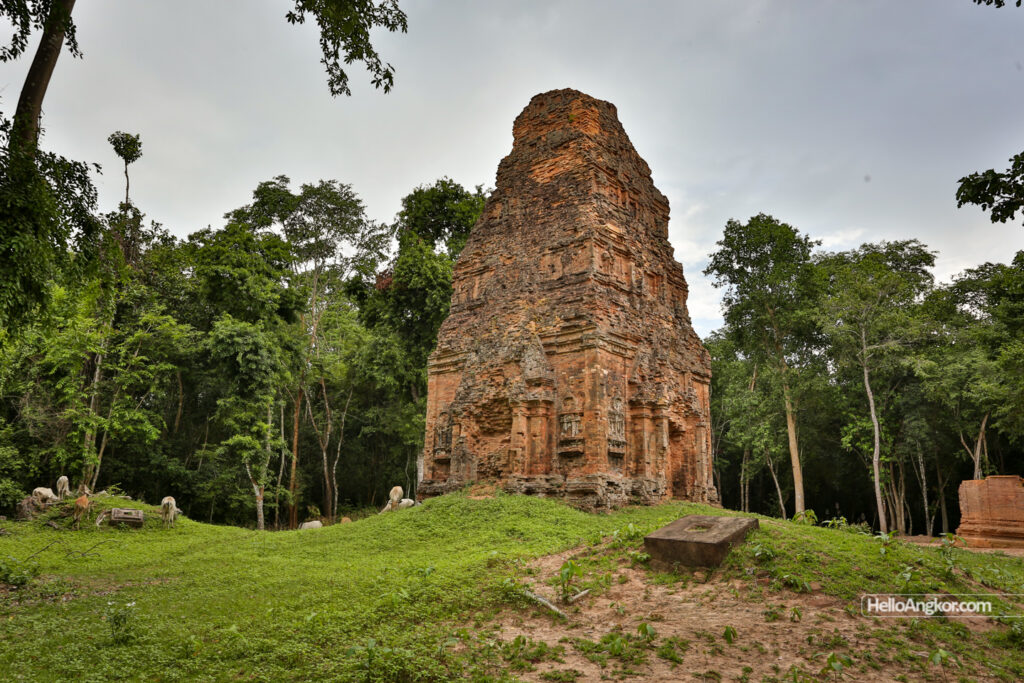
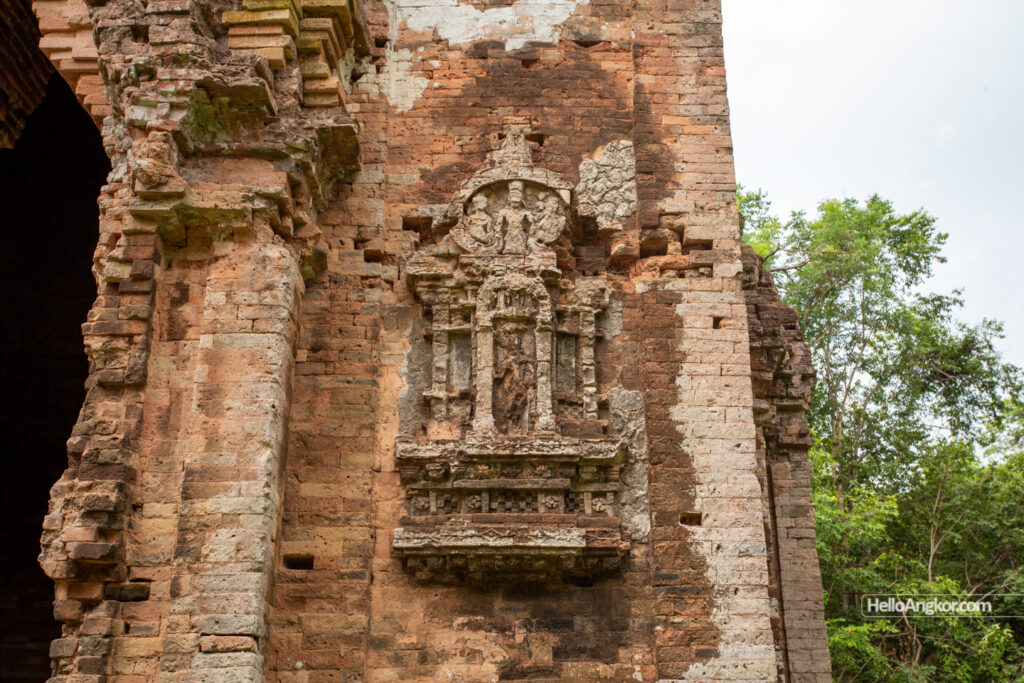
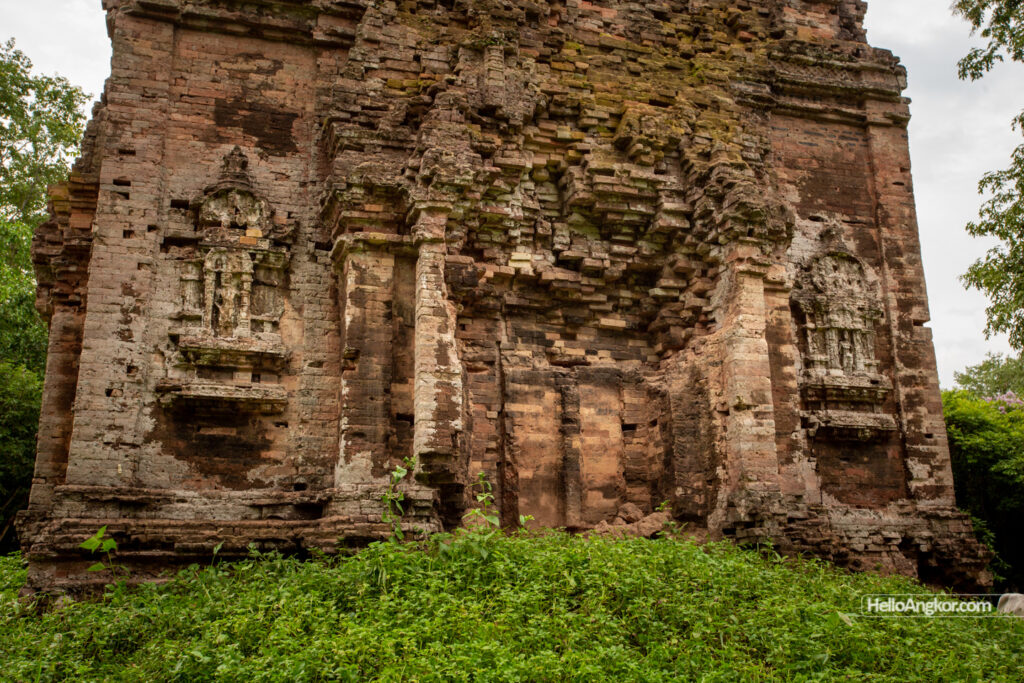
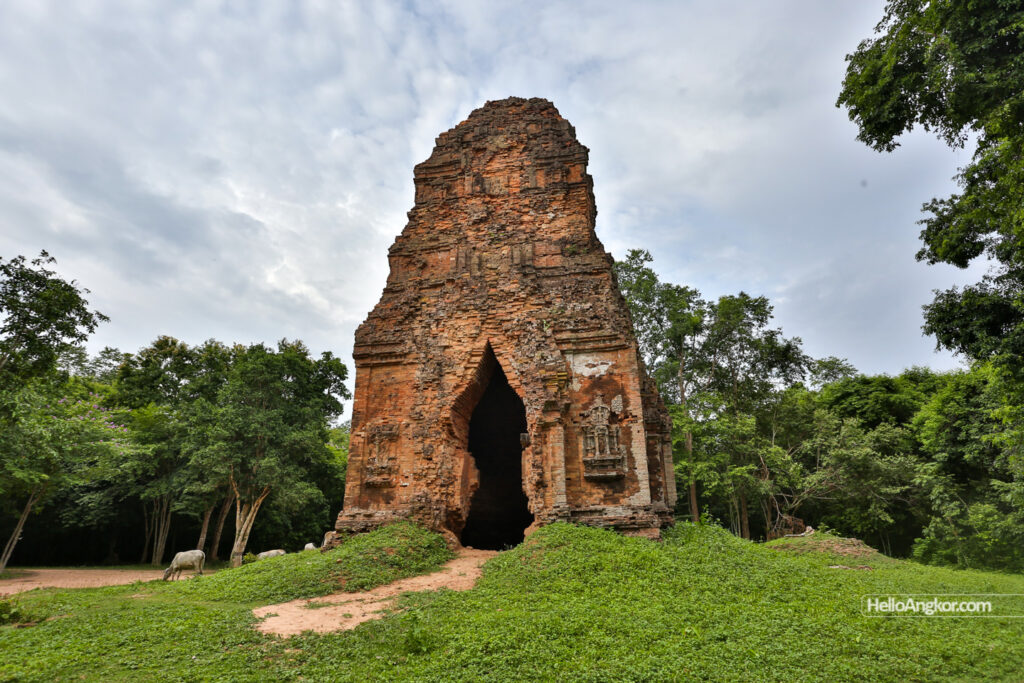
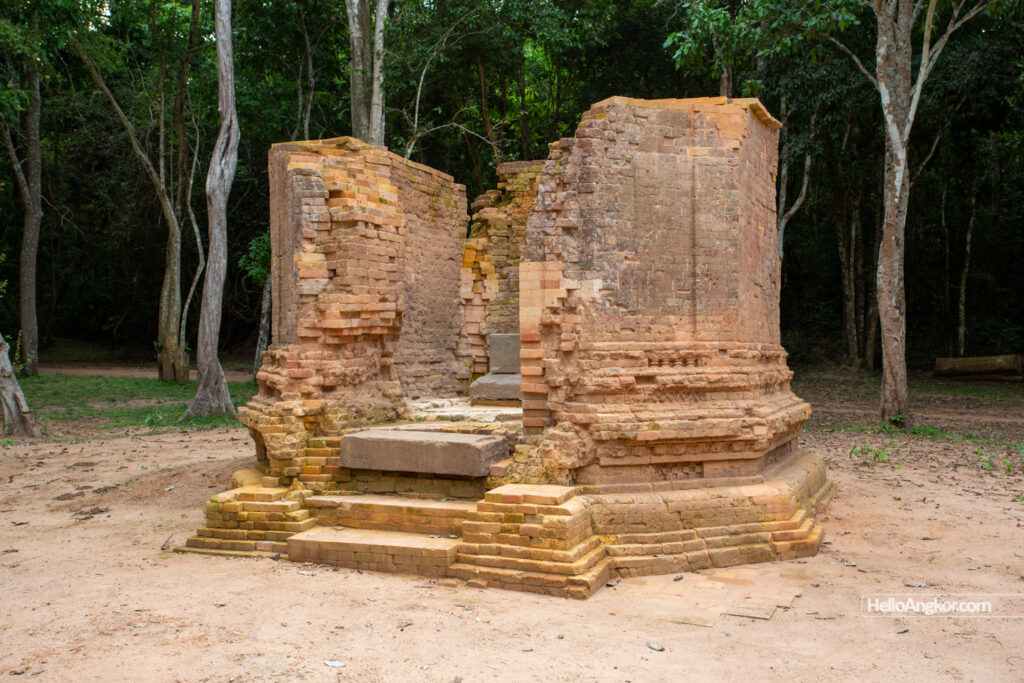
Images 2022 tour
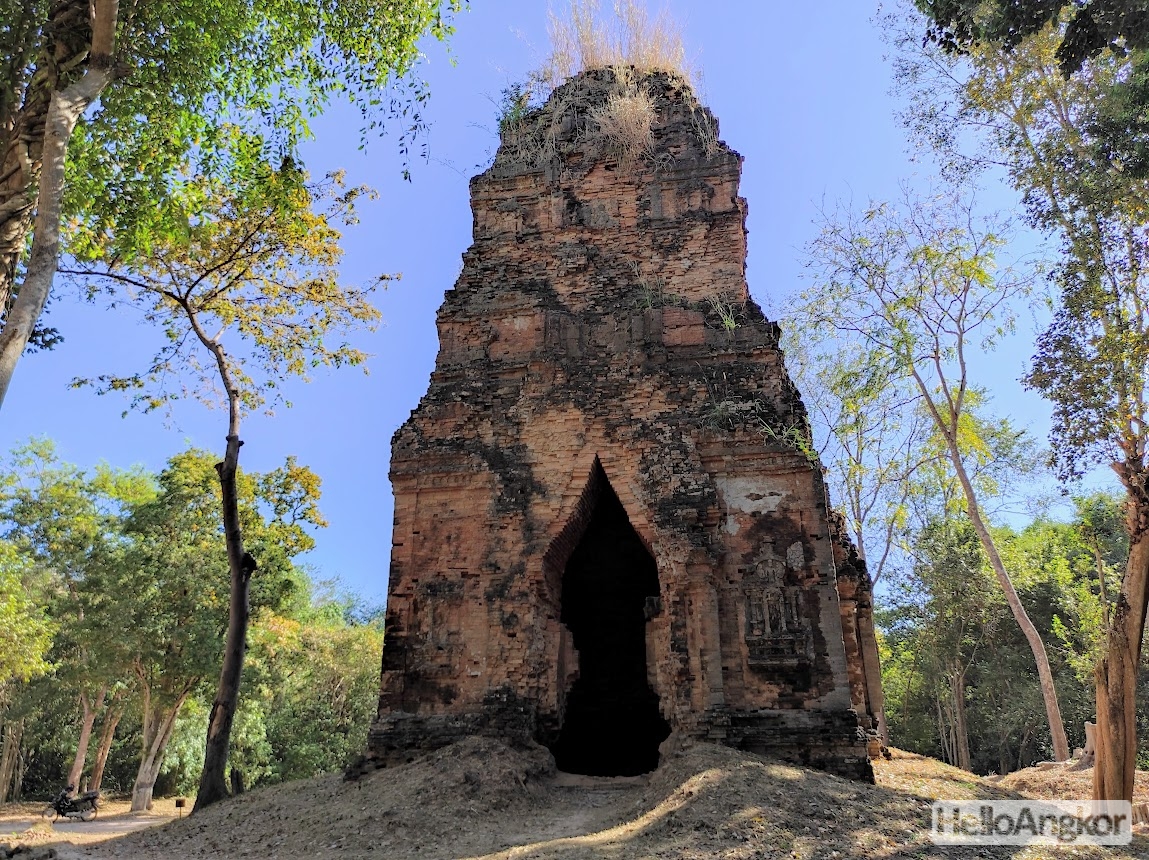
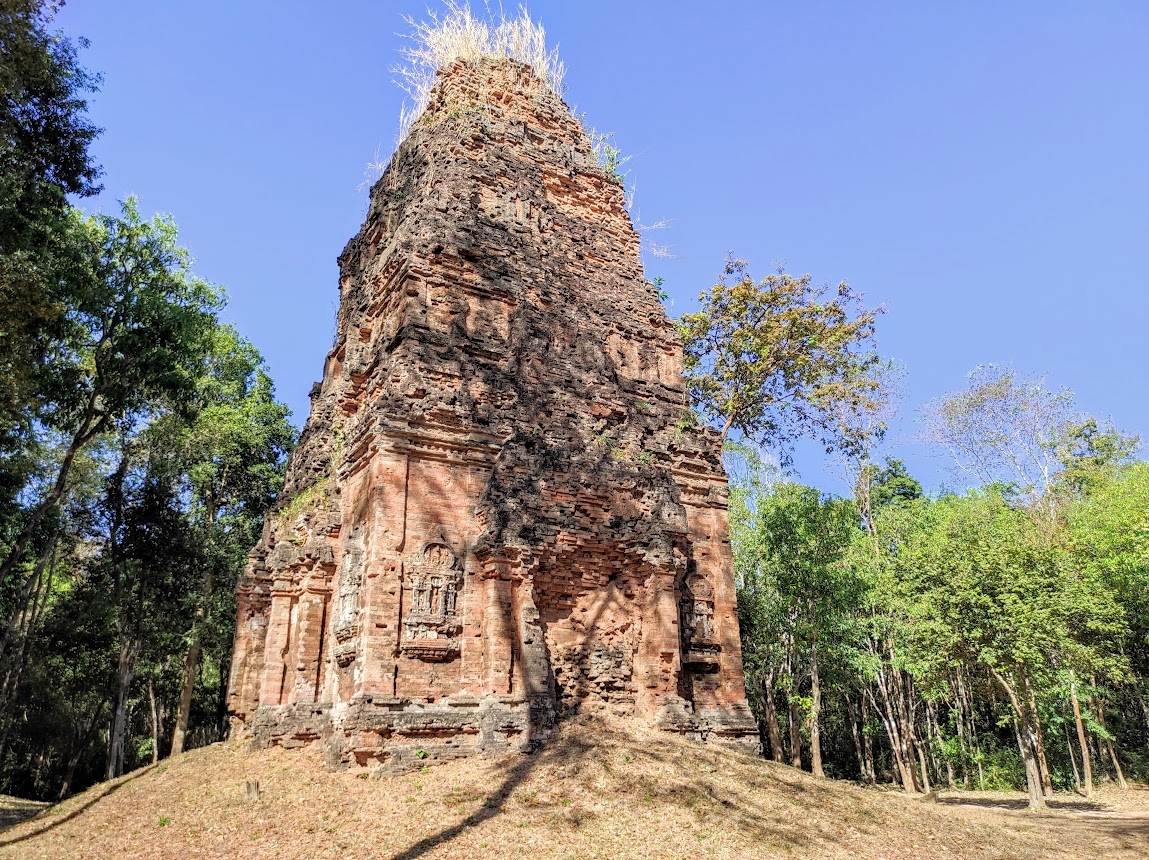
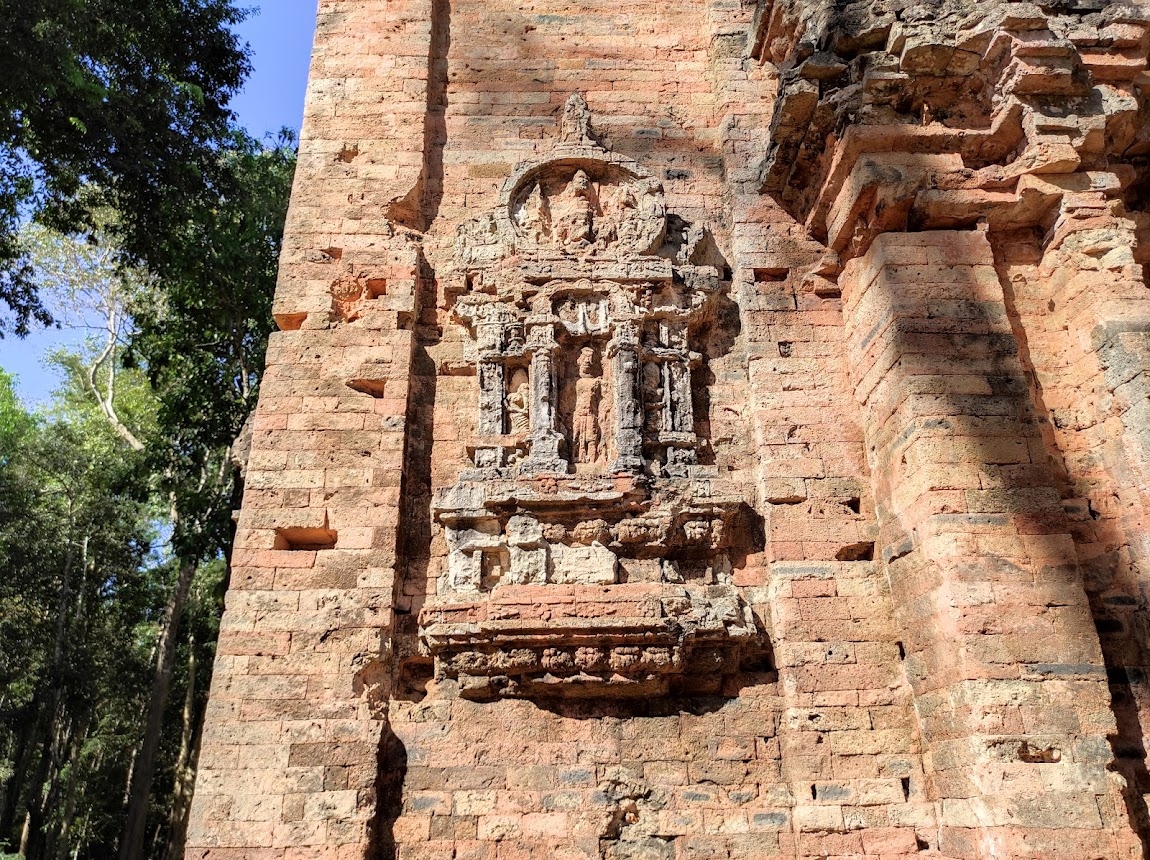
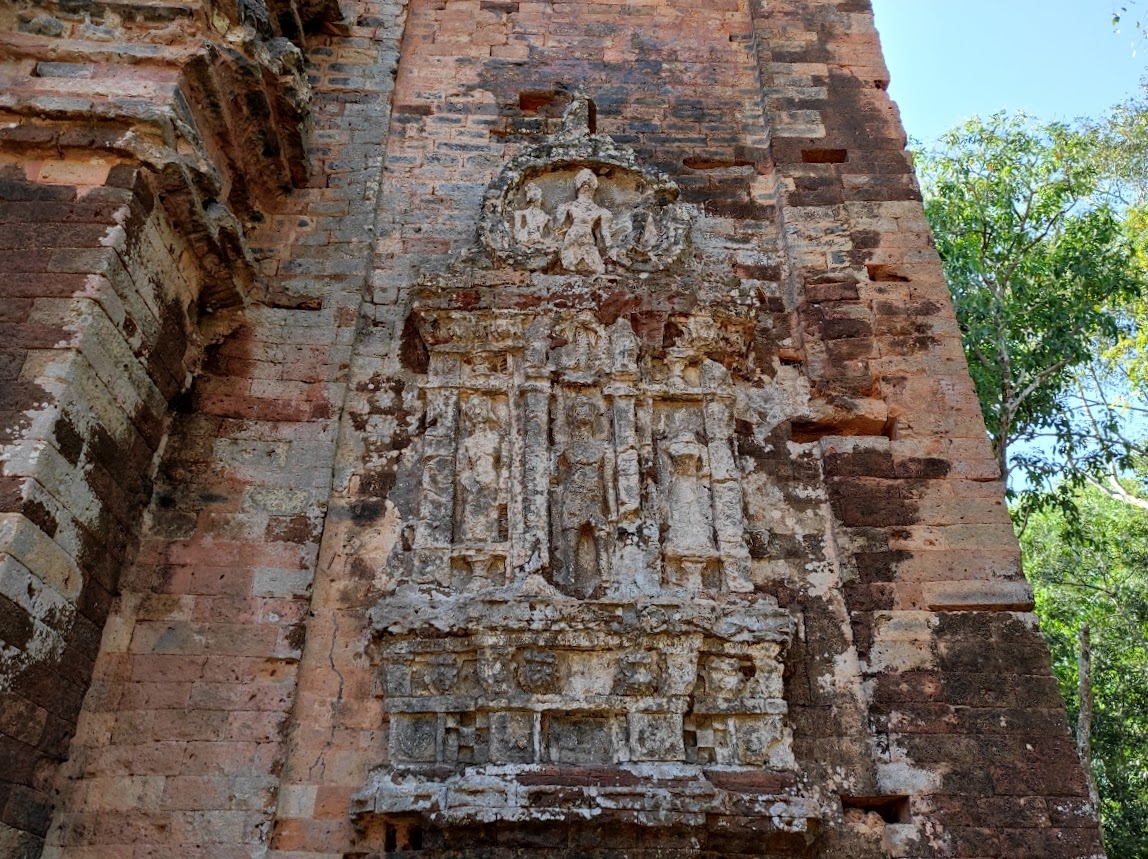
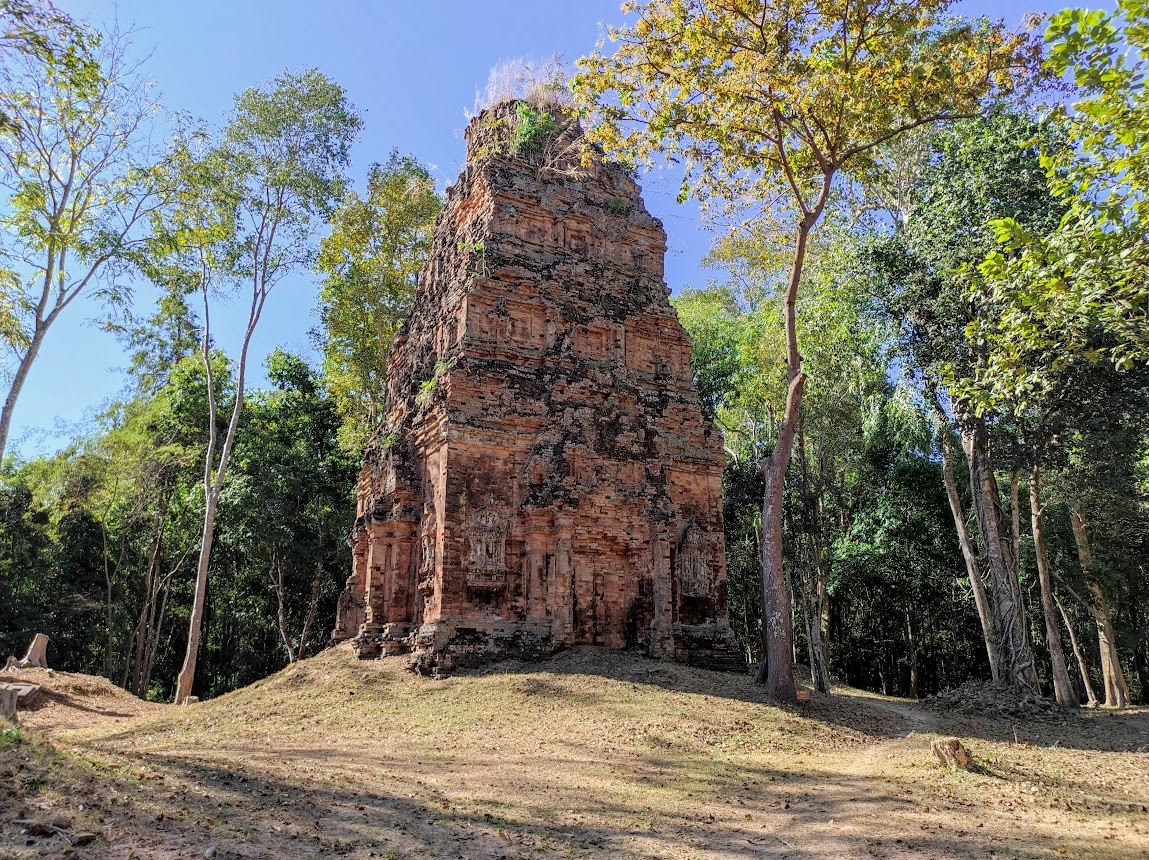
A little to the west is temple Y of the group.
Historical Notes
To the south-west of the central group C, there is a small ensemble made up of a large tower confined to four smaller ones that are three-quarters ruined. The whole is oriented to the West. The central tower Z. is very well preserved. It is made of bricks and still retains fairly large fragments of plaster. Its plan is square; it is equipped with false doors. The vault is quite irregular. The N. wall of the corridor shows two lines of illegible graffito.
The exterior decoration is nothing special. As an exception, the pilasters determine a movement in the cornice profile. The reductions of building present a large base and have only one body; it has a single storey gable and is preceded by a door between pilasters; a very high arch, from which fall garlands, surmounts it. The different parts of the small ensemble are, as usual, decorated with figures.
In its false doors the tower presents an abnormal layout in plan. The tooth behind the false door is barely noticeable; on the other hand, the door and the false door have a projection double that of the recess. There seems to be some confusion here between the value of the elements, because usually the posterior projection of the door is equal to that of the recess.
These false doors are of the complete type with intermediate credenza on the back; that of the North is fairly well preserved. The bottom of the false door is occupied by a representation of leaves with a salient plane between beats with interrupted chamfers. The small columns, which have disappeared, perhaps did not offer the usual round shape, because the corresponding mortises of the lintel are square. This one, in stone, is a fine example of type I. The pilasters seem to have been continued by the usual amortization projecting from the building of the tympanum. The latter appears to be of larger dimensions than usual; it is decorated with pilasters preceded by colon.
L’Art Khmer Primitif, Henri Parmentier, 1927
Map
Site Info
- Site Name: Trâpeang Ropeak (Pr.) Khmer Name: បា្រសាទត្រពាំងរំពាក់
- Reference ID: HA13555 | Posted: January 19, 2021 | Last Update: March 1st, 2022
- Other Names: Group Z, M39
- Tags/Group: pr, ra, Sambor Prei Kuk, T4, Temples
- Location: Kampong Thom Province > Prasat Sambour District > Sambour Commune > Sambour Village
- MoCFA ID: 3509
- Inscription Number/s: K. 443

